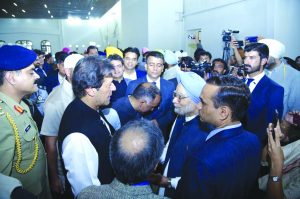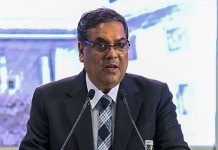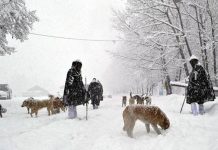 Correct me if I am wrong but the opening of the Kartarpur Corridor has brought the Sikh and Muslim communities closer. The partition and the aftermath that had brought in friction and creases between the two communities were evident until efforts of few individuals who tried to bridge the gaps.
Correct me if I am wrong but the opening of the Kartarpur Corridor has brought the Sikh and Muslim communities closer. The partition and the aftermath that had brought in friction and creases between the two communities were evident until efforts of few individuals who tried to bridge the gaps.
I recall Khushwant Singh telling me that when the Rockfeller Foundation gave him the Fellowship grant to write on the history of the Sikhs, he deliberately chose the Aligarh Muslim University. Why? To quote Khushwant: “I could have chosen the Delhi University or Jawaharlal Nehru University but I chose the Aligarh Muslim University …Why? because, I wanted to do my bit in bridging the gap that had come between the two communities, Sikhs and Muslims because of the partition and the havoc it brought along…It was very important for me to write on the Sikh history and also important to write it from an educational institution like the AMU…After I finished writing the two volumes on the history of the Sikhs, I added in Latin- Opus Exegii- my life’s work is done…To write on Sikh religion and history was my life’s ambition…Having done that I felt like one living on borrowed time, at peace with myself and the world. It did not bother me if I wrote anything else.”
And, definite pointers to the Sikh-Muslim bonding can be witnessed in the Kashmir Valley. Right from the early 1990s, I have been a witness to this bonding and it’s always been heartening to see the hapless finding shelter and solace and food in the various Gurudwaras of the Kashmir region…And, even as one travels to the interiors of the region, one can be sure of spotting and meeting Sikh families who call themselves Kashmiri Sikhs. They bond with the Kashmiri Muslims to such an extent that they are living in complete compatibility. Needless for me to write that the tough ground realities prevailing for decades in the region has only made the bond grow stronger, more connectivity than before between the Sikhs and the Muslims.
As the Srinagar-based lawyer, Hardev Singh Oberoi, had shared with me, “Though my home was partially destroyed during the 2014 floods that hit Srinagar but I didn’t even think of moving out from here. We, Sikhs, will always be here…no one from my family moved out from here even during the turbulent in 90s.” He even went on to tell me that not just he but his entire clan has been “at ease living in the Valley”. He then added, “Mohammadans are better friends than your kith and kin. They can give their lives for you…the only thing is that they are very sensitive about their faith.”
And, in the backdrop of this, today, there stands out much bonding between the two communities in other locales of the country. This time, with the opening of the Kartarpur Sahib Corridor, it got members from both the communities emotional to such an extent that several of my Sikh friends hugged me tight and greeted me with salaams (salutation) and more salaams!
It’s touching to see this bonding between the communities who share so much of common history and turmoil. And, of course, both the communities have been victims of communal violence. I recall that after the horrifying anti-Sikh riots in 1984, many of my Sikhs friends told me that they could visualise what the Muslims go through each time they are attacked and targeted during communal rioting.
In fact, Muslims were deeply affected by the 1984 anti-Sikhs. I recall the late activist Safdar Hashmi’s mother, Qamar Azad Hashmi, telling me that those riots had deeply affected Safdar. To quote her: “The1984 anti-Sikh riots in Delhi had really affected him. For days, we were witness to the horrifying carnage. It was shocking to see the brutality of it all.”
Gurudwara is a place for all
Gurudwaras connect human beings in more than one way. They feed the hungry, they provide shelter to the hapless and above all, relay hope of that vital human togetherness. That human bond that has to hold out, no matter what the circumstances could be.
On one occasion when I’d been inside a gurudwara, I felt peace and tranquility being spread out. I must mention that I went there with Khushwant Singh and one of his friends from America, Surjeet Kaur, who was visiting New Delhi.
I still recall that whilst we were in the midst of some discussion on Sikh history, Khushwant asked me point blank, whether I had been inside a gurudwara?
“What! You haven’t been inside a gurudwara,” asked Kushwant. He then even asked whether I would like to. After hearing the expected yes from me, one late afternoon, he, Surjeet Kaur and I headed towards the Connaught Place situated gurudwara, Bangla Sahib. And, whilst Khushwant sat on the marbled steps leading to the gurudwara in a rather introspective mood, Surjeet and I had gone further ahead and sat inside the gurudwara for a longish stretch, ate and prayed.
On our way back, Khushwant was in the same introspective mood, telling us of the significance of the gurudwaras. In fact, it was amazing to hear him telling the the significant details.
Now, I am impatiently waiting for the day when I can visit the Golden Temple and Gurdwara Darbar Sahib Kartarpur.
letters@tehelka.com













